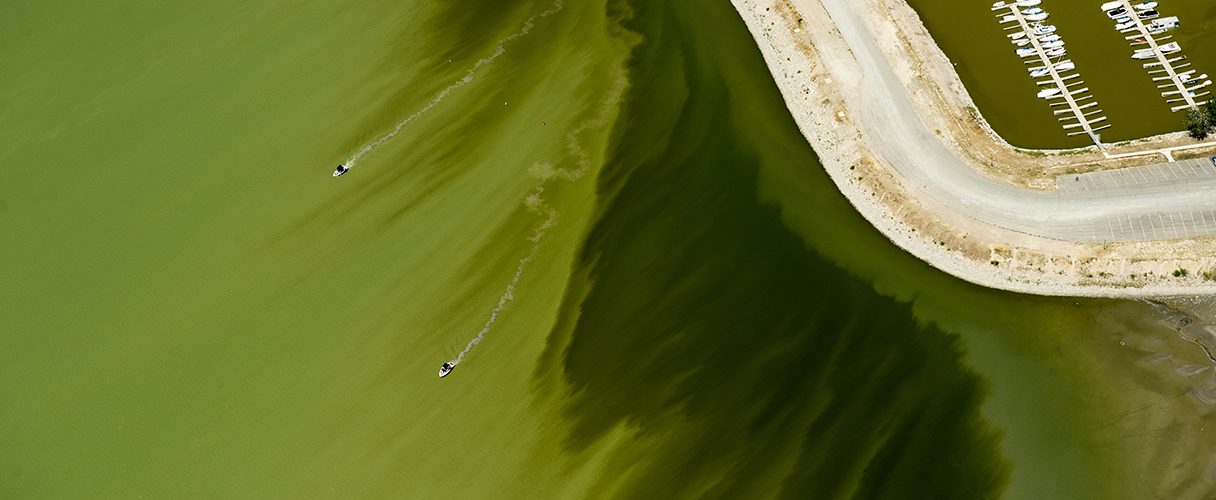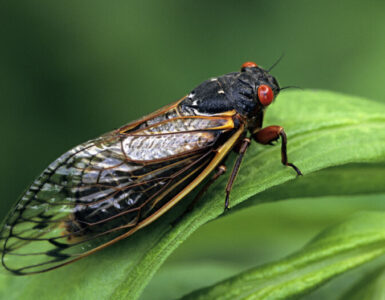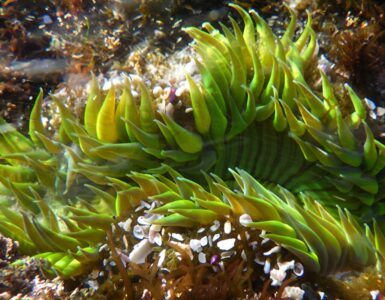Every summer, surges of toxic green muck plague lakes worldwide, sickening hikers who fail to purify drinking water, closing favorite swimming holes, and killing fish. The most feared—and studied—cause of these freshwater “algal” blooms is a genus of cyanobacterium called Microcystis. Its explosive summer growth is thought to be spurred by rising levels of phosphorus, nitrogen, and other nutrients, perhaps from fertilizer run off or other pollution sources. But new research, driven by advances in DNA sequencing, suggests other types of microbes also play key roles in these massive overgrowths.
According to one study, viruses killing off a main competitor of toxic Microcystis may help pave the way for blooms; another indicates nitrogen fixation by other bacteria may provide the needed boost. The results suggest that reducing nutrients may not be enough to stop these slimy explosions, some scientists say. That doesn’t mean curbing pollution is unimportant, they stress, but ecological factors must be considered.
“Interspecies biological interactions help determine blooms,” says Kevin Johnson, a marine scientist at the Florida Institute of Technology who was not involved in the work. “The more details we understand of bloom creation, the better our knowledge of how they might be prevented or controlled.”
With the warming climate and continuing inflows of pollution, harmful algal blooms are on the rise, becoming more frequent and longer lasting in ever more places across the globe. They are “a pretty wicked problem,” says Ariane Peralta, a microbial ecologist at Eastern Carolina University.
In some lakes, reducing fertilizer runoff at first seemed to thwart blooms—then they came back. Similar plans for bloom-choked Lake Erie might backfire, a team of academic microbiologists and water quality experts funded by the National Science Foundation and other U.S. agencies reported in May. A 2014 bloom there caused such severe shortages of drinking water in the nearby city of Toledo, Ohio, that Canada and the United States have agreed to cut phosphorus going into the lake by 40%.
But a simulation of that strategy, along with an analysis of more than 100 related scientific papers, led the team to conclude that although limiting phosphorus might shrink Lake Erie blooms, they could also grow more toxic: with lower overall growth of microbes, any photosynthetic Microcystis left would receive more sunlight and have more nitrogen available, two conditions that favor an increase in their production of microcystin, a substance that make the blooms toxic. They suggested the lake’s nitrogen should also be curtailed.
Read more at Science.org









